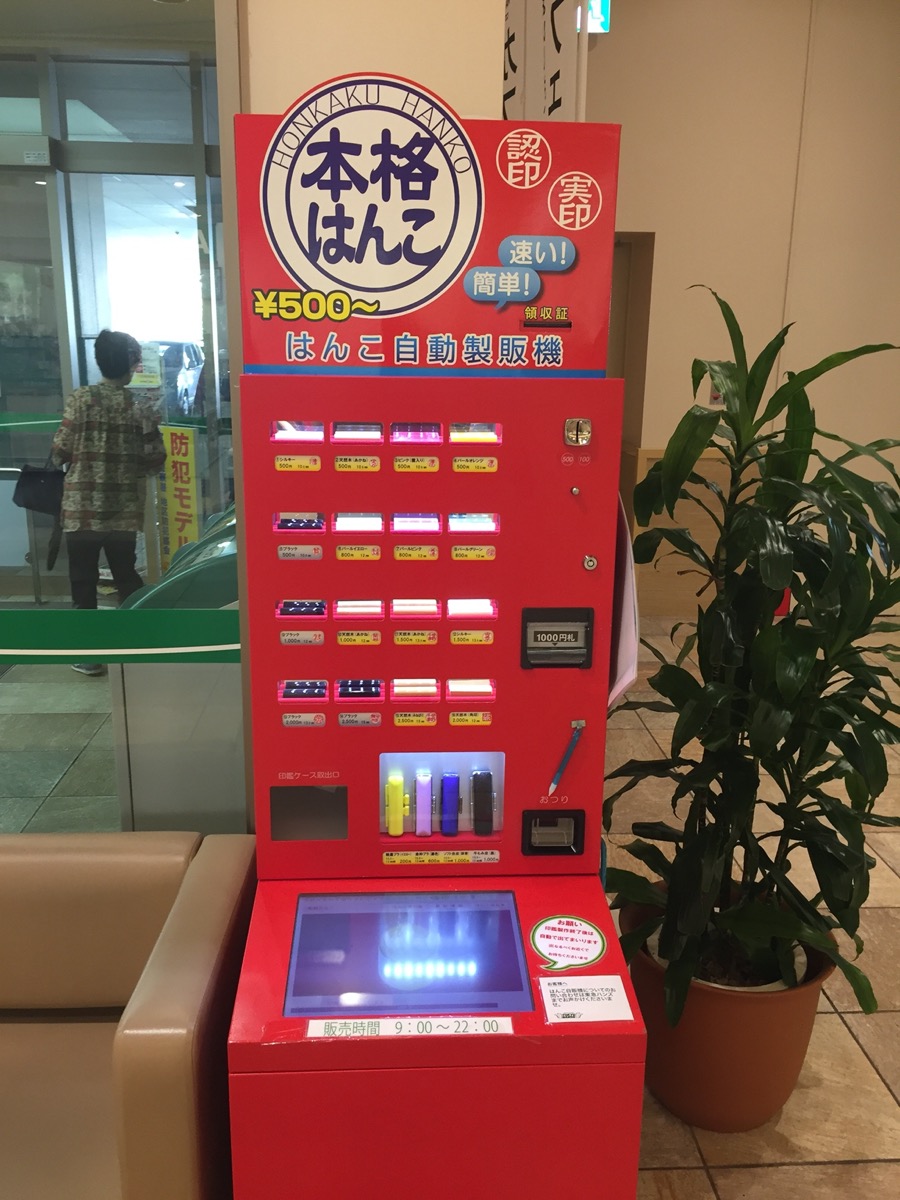Hanko 判子: refers to the actual physical seal
Inkan 印鑑: refers to the ink
Hanko and inkan are “personal seals” or “stamps”; the terms seem to be used interchangeably among native speakers, so I would not be too concerned about which word to use when. Since many other articles discuss these, I won’t get into all the details and talk about all the different types of hanko and inkan, from personal use to bank use to “official registered with the city office” use, but if you are a foreigner living in Okinawa you may need to obtain a very basic bank seal since they are almost always required for opening up a bank account and other “official” business. I also personally use mine for all of my university documents; it is much easier than trying to sign in the tiny spaces provided on the forms. Plus it feel more “official” somehow when I bust out my hanko. It is also makes it easier when parcels are delivered to your house and need a signature.
So how and where do you get one?? Easy! There are several options: go to a hanko shop (like Hanko21), order online through a Japanese website, OR go to an easy-to-use hanko-carving “vending machine!”
As for me, going to the machine is the easiest, quickest, and cheapest! These machines are located in DonQuijote (“Donki”) and Tokyu Hands stores.
How do you use it?? Well, it actually is not too difficult though it is all in Japanese. That being said, the Tokyu Hands machine has an “English Guide” printed out. It is not the best but using this guide will help you through the process. It is actually fairly simple (just be patient!). I have used both machines (DonQ for my hanko, and Tokyu Hands for another foreign student’s hanko)… I think the Tokyu Hands machine is easier for foreigners to use, and has more options for customizing. The DonQ machine is more cookie-cutter with less options. Both machines are the same prices for hanko (see below).
You will have several options when making the hanko; you can use katakana, hiragana, or romaji-English characters (most foreign names don’t have kanji, but if you happen to have a Japanese or Chinese last name then you could use this option). I personally use katakana on my hanko, and I think this is usually what most banks prefer, so make sure you figure out how to spell your name in katakana before coming to the machine.
Next you can also choose to use both last and first name or just last name (I use just my last name). Keep in mind there is a limit to either 1 or 2 lines, with 4 characters per line maximum. You can also change the direction of reading (horizontal, vertical). I use mine in a 4 character box-shape, which also an option should you desire it, though depending on your name this may not be very possible. I think it looks interesting in that way.
From here you can change the font style, as well as thickness of the lines. One last option on the Tokyu Hands machine is you can even get a little picture design– just keep in mind this likely will not fly with banks, so if you are getting it for official purposes I would hold off. If it is only for personal reasons, then by all means get the kitty or flower design!
How much? The price for the smallest (10.5mm) generic hanko is 500yen. A slightly larger hanko (better for bank usage, 12, 13.5, or even 15 mm) is usually about 800-1500yen. Mine is only 12mm which was fine with my bank (and my husband’s is only 10.5mm which is also okay with our bank), though I see some people online saying you should go with 13.5-15mm. If in doubt, ask the bank you want to open an account with.
You have some different options on hanko material color (such as blue, pink, white, black, etc)… yes, mine is girly pink. You can even go use the fancier materials but the price increases accordingly, usually up to about 3000yen. If you want to use a lot of characters (or add the picture design), then the machine will also tell you that you need to purchase the larger size hanko. You can even add on a case, though personally I just went to the Daiso and bought a 100yen cheap plastic case (with ink pad built-in) from the stationary department. Obviously you can splurge on fancier cases.
Once you go through the steps of choosing your design, insert the money into the machine and hit the OK button. The machine takes as little to 5 to 30 minutes, depending on the seal size, to carve out your hanko, and voila, you are ready to go.
